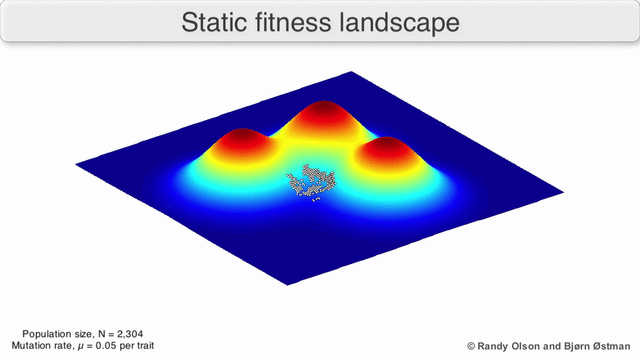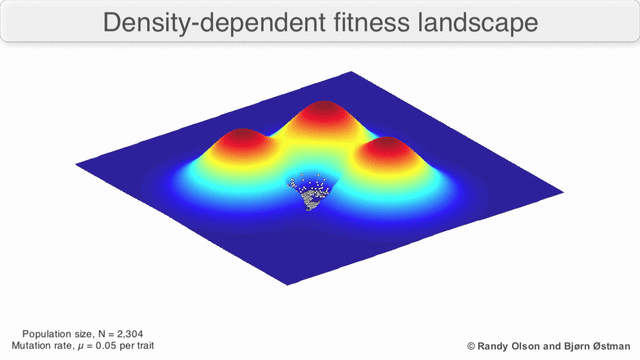Visualizing evolution in action: Density-dependence and sympatric speciation
Fitness landscapes were invented by Sewall Wright in 1932. They map fitness, or reproductive success, of individual organisms as a function of genotype or phenotype. Organisms with higher fitness have a higher chance of reproducing, and populations therefore tend to evolve towards higher ground in the fitness landscape. Even though only two traits can be visualized this way, we can actually observe evolution in action. Building on the idea of fitness landscapes, Bjørn Østman and I decided to create some animations of simulated evolving populations to illustrate concepts of evolution that are typically difficult to comprehend.
Here we demonstrate how sympatric speciation can occur when fitness depends on the density of organisms, i.e., density-dependence.
Warning: The GIFs on this page are large and may take some time to load.
Here's the full video that Bjørn and I submitted to the ALife 2014 Science Visualization Competition.
Tags

Dr. Randal S. Olson
AI Researcher & Builder · Co-Founder & CTO at Goodeye Labs
I turn ambitious AI ideas into business wins, bridging the gap between technical promise and real-world impact.

